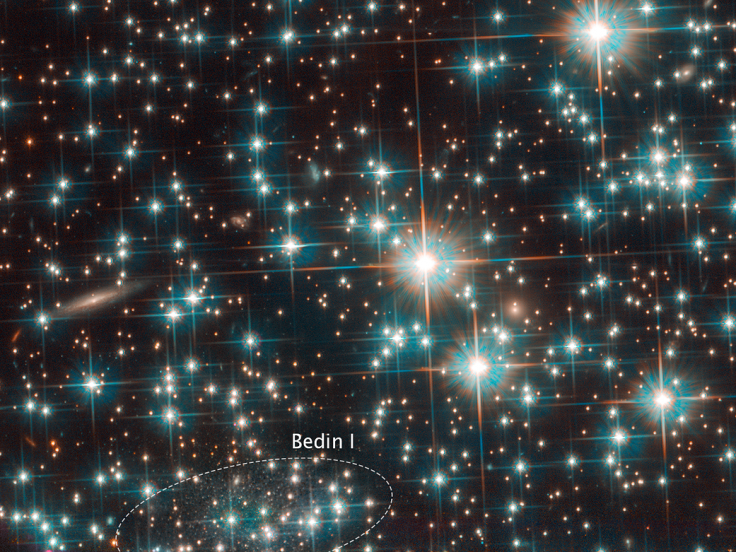
sing the NASA/ESA Hubble Space Telescope, scientists have discovered a new dwarf galaxy relatively near the Milky Way.
The discovery was made by an international team of astronomers who had been utilizing the Hubble to observe some of the oldest and faintest white dwarf stars within the globular cluster NGC 6752. Their aim was to measure the age of the cluster by using these stars, but they unexpectedly found a dwarf galaxy in our cosmic backyard.
The scientists observed a compact collection of stars in the outer edges of the area observed with Hubble's Advanced Camera for Surveys. They analyzed the brightness and temperatures of the stars and later found that they did not belong to the globular cluster, which is part of the Milky Way. Instead, they were actually about 30 million light-years away.
Dubbed Bedin 1 by the astronomers who discovered it, the dwarf galaxy has been described as modestly sized and elongated. Our newly discovered cosmic neighbor is very faint and tiny, measuring only about 3,000 light-years at its greatest extent, which is just a fraction of the size of the Milky Way galaxy. Due to these, scientists have determined that it is a dwarf spheroidal galaxy, according to a report published in the journal Monthly Notices of the Royal Astronomical Society: Letters.
Dwarf spheroidal galaxies all have small sizes, low-luminosities and lack dust and old stars. Within the Local Group of Galaxies, there are about 36 of the dwarf spheroidal type, and among them, 22 are satellite galaxies of the Milky Way.
Bedin 1 has some features that make it stand out from other dwarf spheroidal galaxies, which are not uncommon. Bedin 1 is very isolated and is also one of the very few of its type that have a well-established distance. Perhaps the most isolated small dwarf galaxy discovered so far, the Bedin 1 is located 30 million light-years away from the Milky Way galaxy and two million light-years from NGC 6744, its nearest plausible galaxy host.
Scientists also gleaned from its stars' properties that the galaxy might be nearly the same age as the universe itself at 13 billion years old.
This article was first published in IBTimes US. Permission required for reproduction.









